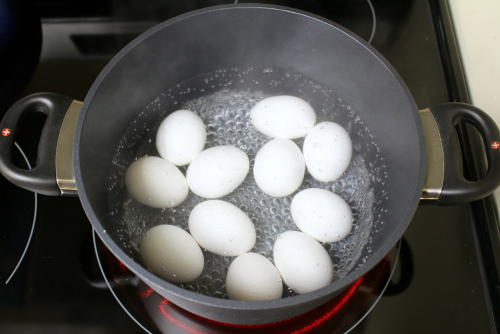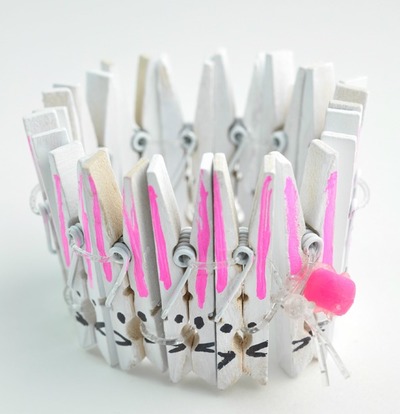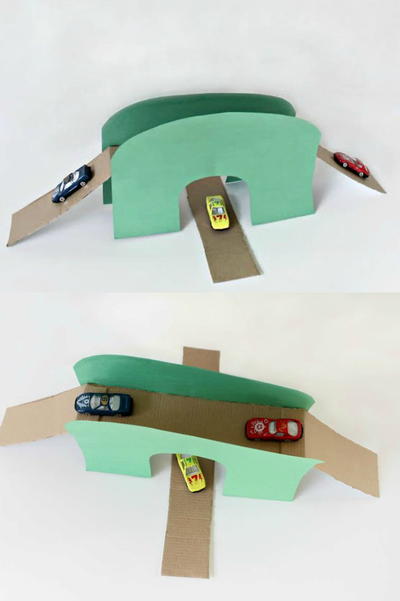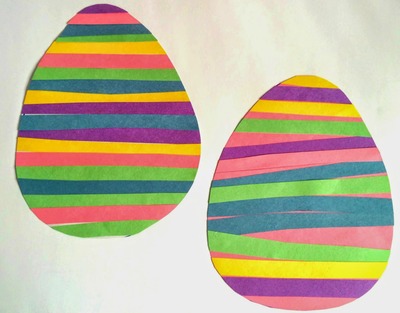How to Dye Easter Eggs + 16 Easter Egg Decorating Ideas
Learn how to dye eggs with food coloring and other things you already have at home.

It's time to rethink how to dye Easter eggs. In order to make the best egg designs with your family, you don't always have to buy a kit from the store. You'd be surprised what cute little creations you can make for Easter with stuff you have lying around the house.
Starting with the perfect hard-boiled egg, you can dye your eggs naturally with food coloring or other things you may already have in your kitchen cabinet— like tumeric, onion skins (yes, you read that right), and even blueberries.
In this collection of Easter egg decorating ideas, you'll learn everything you need to know to take your family's traditional dyed eggs to the next level!
Plus, don't forget to subscribe to the AllFreeKidsCrafts newsletter for more projects you love from bloggers you trust, delivered straight to your inbox every week.
How to Hard Boil an Egg Perfectly
Making hard boiled eggs is the first step to dyeing Easter eggs. Follow these instructions from the editors of RecipeLion.com to get the perfect hard boiled eggs every time.
- Get a saucepan that is at least twice as tall as your eggs and place your eggs gently in the pot.
- Put cold tap water into the pot enough to cover all the eggs. This method will help prevent your eggs from cracking.
- Place the pot, uncovered, on a burner and turn the heat up to high.
- Let the eggs boil for 12 minutes.
- Remove the pot from the heat and place it in the sink, running cold water into it for 2-3 minutes.

How to Dye Easter Eggs
Pre-packaged dye mixes can be pricey. If you want to dye Easter eggs without using a kit, you can try these simple methods. Before you begin dyeing Easter eggs, you should set up your work area. Be sure that your work surface is protected by a table cloth or newspaper.
1. How to Dye Easter Eggs with Food Coloring
Sherri Osborn from About Family Crafts has a simple tutorial for dyeing Easter eggs:
- Mix together a 1/2 cup of water at room temperature, 1 tablespoon of vinegar, and several drops of food coloring inside a coffee cup. Do this for every color you plan to use for your Easter eggs.
- Carefully place one egg in each cup of food coloring. Watch the eggs carefully and remove them when they reach the desired shade.
- Use a spoon to remove the egg and place it in an egg holder or on a paper towel to dry.
Bonus tip: 20 drops should be sufficient, but you can adjust the amount of food coloring to your liking.

2. How to Dye Easter Eggs Naturally
Did you know you can skip the chemical dyes in favor of natural materials? When you use fruits and other natural materials to dye Easter eggs, the color may not be as vibrant as the color you get from pre-packaged chemical dyes or food coloring; however, you can still make your Easter eggs pink, blue, or yellow. Plus, using ingredients you already have in the house will save you money, and you and your children can take pride in the fact that you were eco-friendly for Easter. Learn how to dye Easter eggs naturally with this tutorial.
Get the Tutorial

Easter Egg Decorating Ideas
Alternative Ways to Color Easter Eggs:
These Easter egg ideas are a fun way to put a colorful twist on dyeing Easter eggs. Instead of making your eggs monochromatic, use your newfound dyeing skills to create cool and colorful Easter eggs with these brilliant tutorials. Kids will love putting their favorite colors to use in new and exciting ways!
Other Easter Egg Decorating Ideas
When it comes to decorating Easter eggs, there's no reason to stop at simply dyeing them. These amazing Easter egg decorating ideas go above and beyond the standard dip and dye. Add a little personality to this entertaining Easter tradition with these Easter egg designs.
- Fingerprint Easter Egg Decorating Ideas
- Melted Crayon Easter Egg Coloring
- Disney Easter Egg
- Glitter Dipped Easter Eggs
- Smartie Easter Eggs
- Bunny Easter Eggs
- Egg-Centric Easter Egg Decorating Idea

Read NextPlastic Easter Egg Caterpillars

















